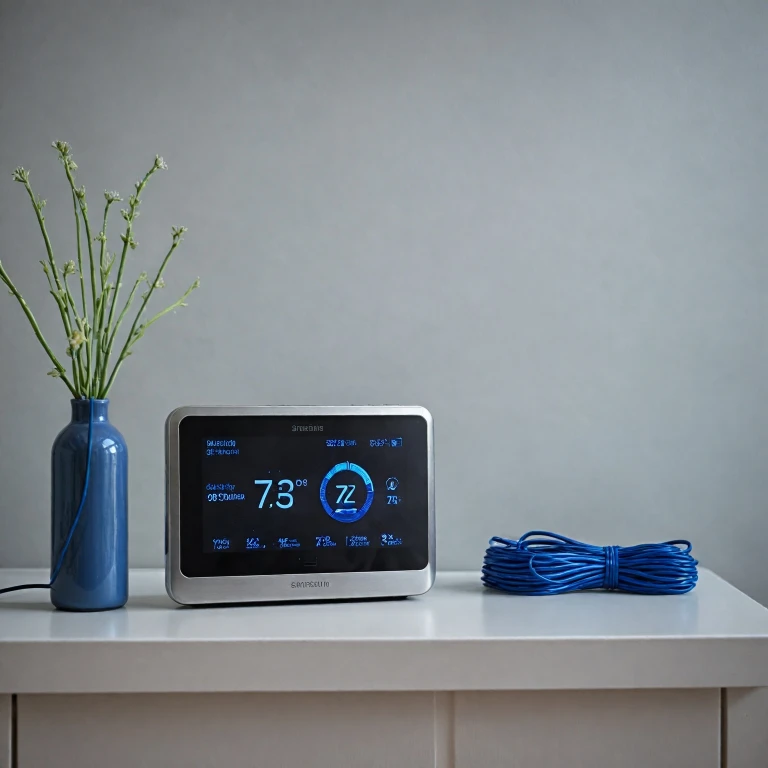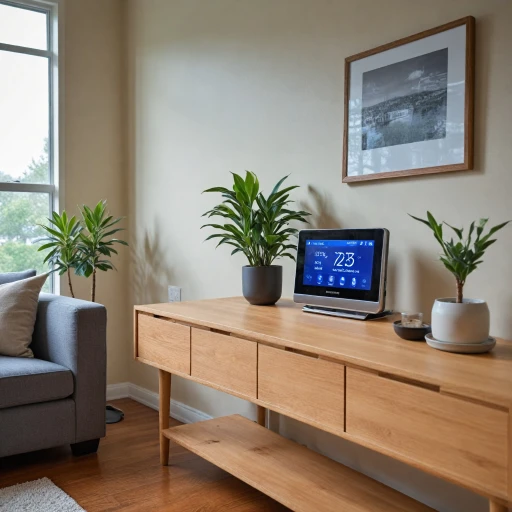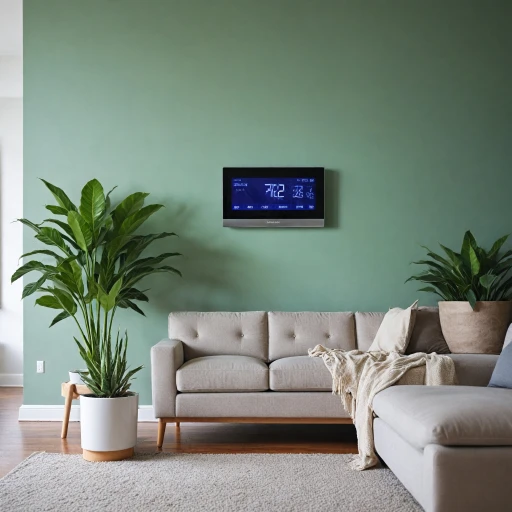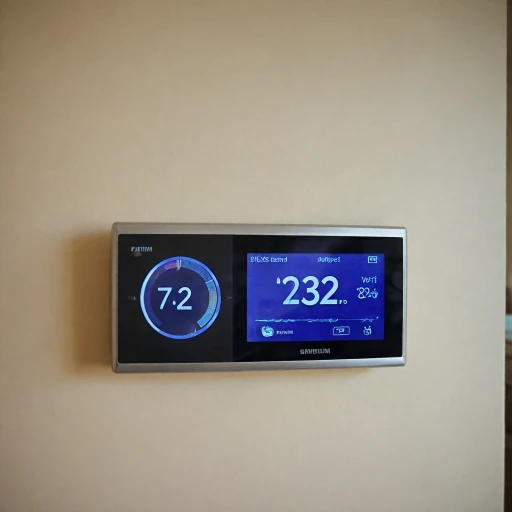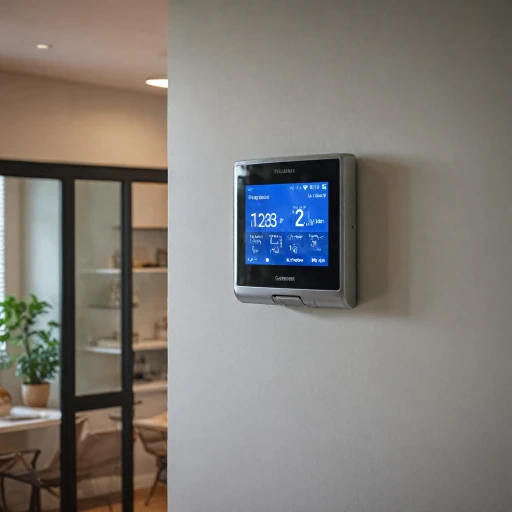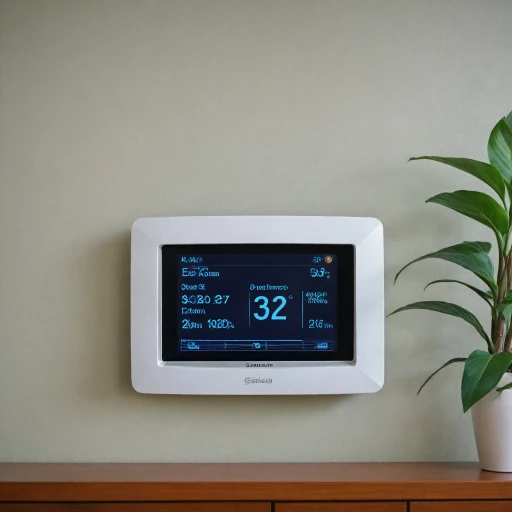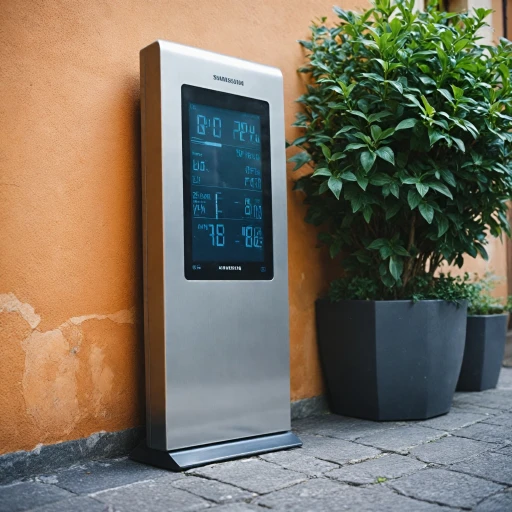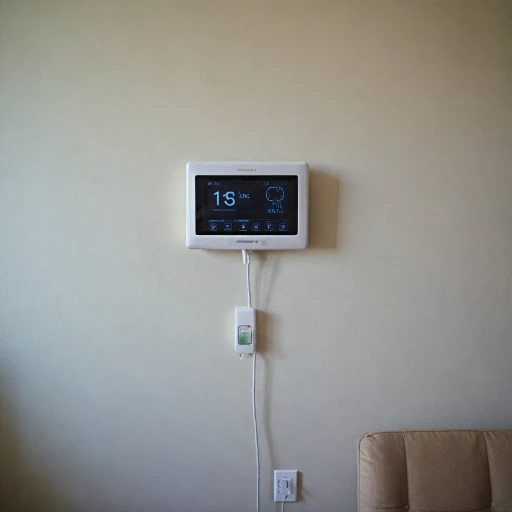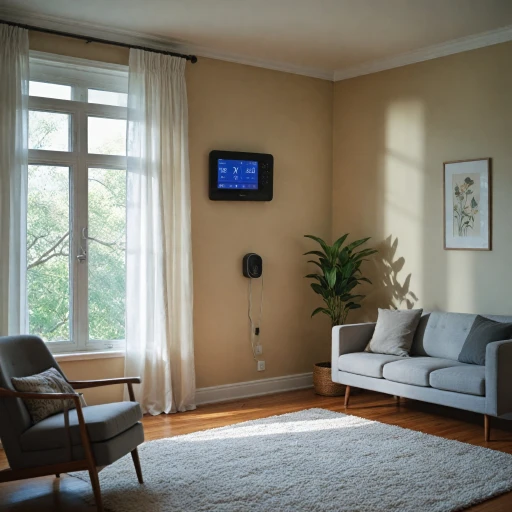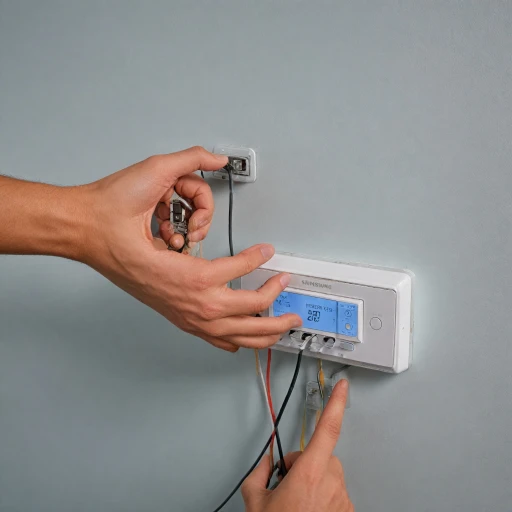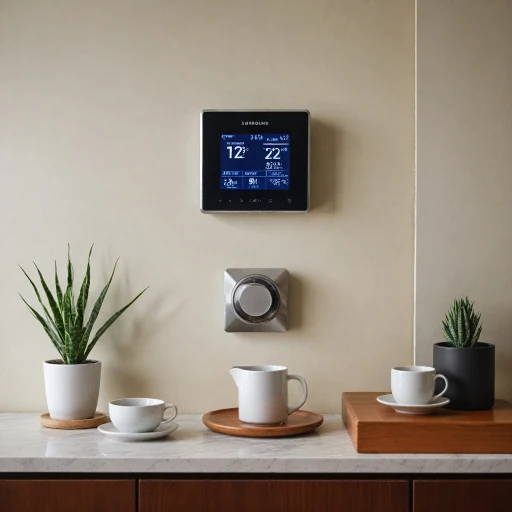
The Basics of Smart Thermostat Wiring
Smart thermostats have revolutionized the way we control our home’s heating and cooling systems. At the heart of these devices is a complex wiring system, which connects your thermostat to the HVAC system, ensuring optimal temperature control throughout your home. Understanding this wiring is crucial for both installation and troubleshooting purposes.
Unraveling the Wire Maze
Thermostat wiring can initially seem like a tangle of multi-colored wires, each serving a specific function. Common wires you might encounter include the red wire, which typically supplies power, and the white wire, which is generally responsible for controlling the heating. The blue wire often plays a critical role, which we'll delve into further in the next sections.
It's important to identify the purpose of each wire to achieve a seamless integration with your heating and cooling systems. Incorrect connections might lead to inconvenience or more serious issues like system malfunction.
Wiring Standards and Color Codes
While there is a general standard for thermostat wiring, variations can still occur based on the type of HVAC system installed. Typically, you may encounter wires connected to various terminals like R (red), W (white), and C (common), among others. These wires are essential for regulating functions such as heating, cooling, and the heat pump stage.
Each wire color usually aligns with a specific control for different components of the HVAC system, enabling smooth operation. Proper identification and connection of these wires are essential to maintain the efficiency of your heating cooling systems.
Installation Insights
For a successful installation of a smart thermostat, integrating a comprehensive guide can be incredibly beneficial. Resources such as this guide to installing the Honeywell T6 thermostat provide step-by-step instructions that simplify the process.
Ensuring that each wire is connected to the correct terminal is paramount. Misplaced wires could lead to devices not functioning properly or even damage to the control board or wire terminal.
In upcoming sections we'll explore the specific role of the blue wire, common issues that can arise, and future trends in thermostat wiring that could make these tasks even more intuitive. Stay tuned as we break down these complexities to make smart thermostat management accessible to everyone.
What is the Blue Wire?
Unveiling the Mystery of the Blue Wire
In the intricate world of thermostat wiring, the blue wire, often referred to as the common wire or "C" wire, plays a crucial role in the functionality of your smart thermostat. Understanding its purpose and function can prevent a myriad of issues, ensuring your heating and cooling systems run smoothly. The blue wire acts as a crucial component in delivering a continuous flow of power to your smart thermostat. Unlike traditional thermostats that rely on battery power, smart thermostats require a constant connection to electricity to maintain their advanced functionalities, such as Wi-Fi connectivity and programming features. This is where the blue wire comes into play, linking your thermostat to the HVAC system's control board. The importance of the blue wire is even more pronounced when you consider systems that incorporate a heat pump or multi-stage heating and cooling. In such cases, the blue wire ensures seamless switching between heating and cooling modes, maintaining your desired comfort levels. The blue wire typically connects to the "C" terminal, which may be located on the thermostat or the control board. However, it's not uncommon for older wiring setups to lack a visible blue wire. In such instances, homeowners may encounter compatibility issues when installing smart thermostats. Some people might attempt to use a wire adapter to compensate for the absence of a common wire, but this is not always a perfect solution. To avoid unnecessary headaches during installation or troubleshooting, double-check your HVAC system's compatibility with smart thermostats understanding compatibility of smart thermostats with Alexa might provide additional insights. Ensuring that your system is wired correctly and includes the blue wire from the start can make a significant difference in the reliability and performance of your smart thermostat.Common Issues with Blue Wire Connections
Challenges with Blue Wire Connections in Smart Thermostats
When dealing with the installation of a smart thermostat, one of the key considerations is ensuring the proper connection of all wires, including the often-discussed blue wire. Known as the common wire or C-wire, this wire plays a critical role in powers and maintaining the functions of your smart thermostat. However, many homeowners encounter problems related to blue wire connections in their heating and cooling systems. One common issue stems from older HVAC systems that did not traditionally require a C-wire. In these systems, the technology relied on other wires to complete the electrical circuit, meaning the blue wire might be absent or not connected properly at locations like the control board and the wire terminal. This can lead to a lack of consistent power supply, disrupting the smart thermostat's ability to function effectively. Improper wiring with blue wires is another prevalent concern. Incorrectly connecting the blue wire to the wrong terminal on the system or thermostat can cause the system to control malfunction, especially in dual-stage heat pump systems, where thermostat wires are crucial for maintaining correct operation. The misconnection of wires can result in an inefficient HVAC system, affecting both heating and air conditioning capabilities. In cases where a blue wire is not available in your system, wire adapters or add-a-wire solutions are often utilized to mitigate this deficiency. These adapters can provide the common power required by your smart thermostat, though they involve additional installation steps and costs. Given the multifaceted issues that can emerge with blue wire connections in smart thermostats, it’s essential to understand the role each wire plays in your heating and cooling setup. For those navigating these challenges, choosing the right components is crucial. For more detailed guidance, consider exploring choosing the right 12v thermostat for your RV, which can offer insights that might be applicable beyond just RV systems.Installing a Smart Thermostat with a Blue Wire
Steps to Ensure a Successful Installation
Installing a smart thermostat when you've identified a blue wire is an essential task that calls for careful attention. The role and placement of this wire, often referred to as the common wire, can vary depending on whether you're working with a heating system, cooling system, or a combination of both. The blue wire typically provides continuous power to the thermostat, a significant requirement for smart thermostats. When you're ready to install, follow these straightforward steps:- Power off your HVAC system: It's crucial to begin by switching off the power to your HVAC system from the main circuit breaker. This ensures safety and prevents potential damage to the system.
- Remove the existing thermostat: Carefully unscrew and detach the current thermostat. Pay close attention to the arrangement and colors of thermostat wires connected to the control board.
- Identify the blue wire: Locate the blue wire among the mass of wires from the wall. Often, it connects to the terminal marked as "C" for common wire. Keep in mind that blue and red wires usually indicate cooling and power needs, respectively, while the white wire often translates to heating.
- Connect your smart thermostat: Attach each wire to the corresponding wire terminal on your new smart thermostat. For instance, if your blue wire is indeed the "common" wire, ensure it connects to the "C" terminal.
- Finalize installation: Once all wires are correctly attached, mount the smart thermostat on the wall. Ensure everything is secure before reinstating the power to your HVAC system.
- Configuration and testing: Turn on the power and begin configuring your smart thermostat as per the manufacturer's instructions. Double-check to see if the heating and cooling functions respond correctly, ensuring all stages of the system wiring are adequately managed.
Troubleshooting Blue Wire Problems
Troubleshooting Tips for Blue Wire Problems
If you've run into issues with the blue wire in your smart thermostat system, don't worry—you're not alone. Troubleshooting wire problems can be straightforward with the right approach and tools. Here are a few potential remedies:
- Check for Loose Connections: The first step is to ensure all wire ends are securely attached to their respective terminals. A loose blue wire at the thermostat’s terminal or the control board can disrupt the power supply to your thermostat.
- Inspect Wire Insulation: Over time, the insulation of wires, including the blue wire, can wear out, causing short circuits. Inspect the wire for any exposed copper and use electrical tape to cover it if needed.
- Verify System Compatibility: Some HVAC systems might not support a C-wire or may require additional components like a wire adapter or power extender kit. Verify your system’s requirements against the smart thermostat specifications.
- Check Thermostat Settings: If your smart thermostat isn’t working as expected, ensure that the settings align with your HVAC setup. This includes verifying the heating and cooling configurations, especially in systems with a heat pump.
- Power Supply Issues: If the thermostat powers on and off intermittently, the issue might be with the control board. Ensure that your HVAC system is supplying consistent power.
- Consult Professional Support: If troubleshooting doesn’t resolve the issue, reaching out to a professional for diagnosis might be necessary. Missteps can lead to further complications in heating or cooling efficiency.
Always approach thermostat wiring with caution to prevent electric shock or further damage. By following these steps, most blue wire issues can be diagnosed and resolved efficiently.
Future Trends in Thermostat Wiring
Exploring the Future of Thermostat Wiring
The evolution of smart thermostat technology continues to impact how we manage our heating, ventilation, and air conditioning (HVAC) systems. As the demand for energy efficiency and automation grows, the future of thermostat wiring is poised to see significant advancements. Here are some trends and developments that illustrate where we're headed:- Integration with Smart Home Ecosystems: Smart thermostats will increasingly integrate seamlessly with broader smart home systems. This interconnectedness means enhanced control over temperature settings and energy consumption through comprehensive platforms that manage your entire home’s environment.
- Wireless Innovations: While the blue wire currently serves a crucial role in completing circuits for many smart thermostats, future designs might reduce reliance on physical wires. Advances in wireless technology could lead to systems that operate without traditional wiring, enhancing installation flexibility and reducing complexity.
- Enhanced Intercommunication Between Devices: Future thermostat systems may improve communication between HVAC components and other smart devices. This could mean more sophisticated responses to environmental changes, leading to smarter energy use that adapts in real-time to occupant behavior.
- Predictive and Adaptive Technologies: Thermostats could incorporate AI-driven features that use machine learning to predict heating and cooling needs based on past usage patterns, current occupancy, and weather forecasts. This would optimize energy use without manual intervention.
- Energy Harvesting and Battery-less Designs: To minimize dependency on common wires (like the blue wire) that provide power, future thermostats might leverage technologies such as energy harvesting. This approach captures energy from temperature differences or light, potentially eliminating the need for battery or wired power altogether.
- Sustainability and Eco-Friendly Considerations: Future advancements may focus on green technologies that not only enhance energy efficiency but also promote sustainability in manufacturing and materials, aligning with eco-friendly standards.
